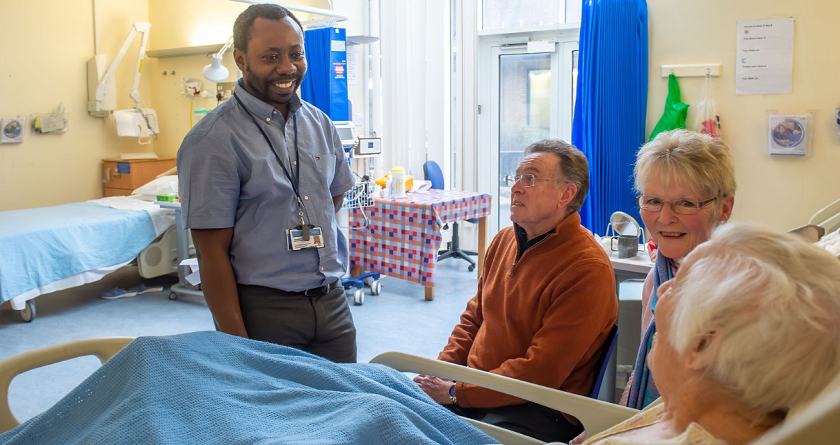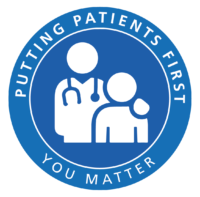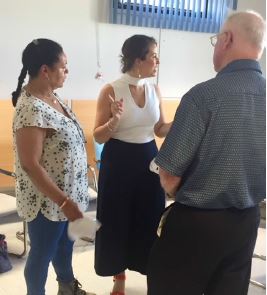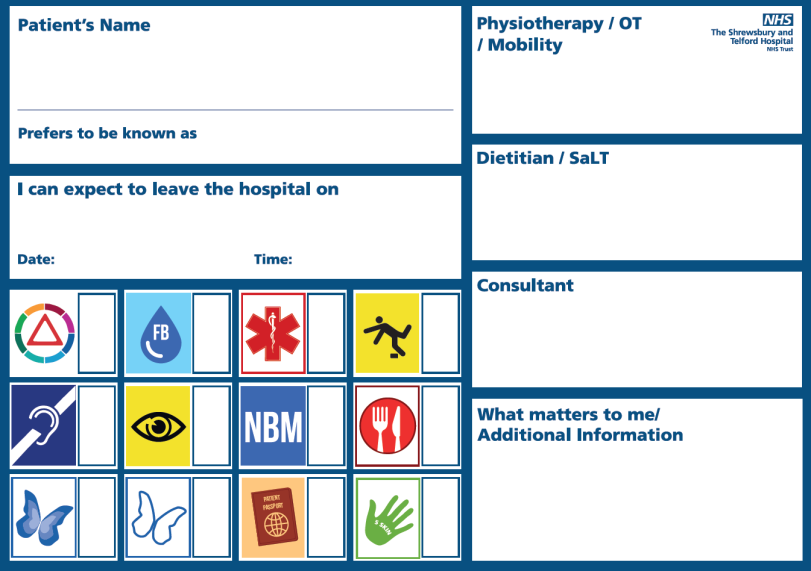Patient Experience: What We Do

 The Patient Experience Team is responsible for driving data-led improvements throughout the Trust. They work with wards, departments and teams to embed change following feedback from patients, carers and visitors. They also work with external organisations and patient groups to understand what is important to people when they come into hospital.
The Patient Experience Team is responsible for driving data-led improvements throughout the Trust. They work with wards, departments and teams to embed change following feedback from patients, carers and visitors. They also work with external organisations and patient groups to understand what is important to people when they come into hospital.
Whilst each member of staff has a responsibility to ensure patients, carers and visitors have a positive experience when accessing our services, the Patient Experience team provides collective support and leads projects to meet and exceed the needs of the local community.
You can see some examples of this in our Patient Experience Annual Report.
 Leadership Workshop
Leadership Workshop
Previously, we have held an “Introduction to Leadership” workshop at the Trust, delivered by the West Midlands Leadership Academy.
The workshop is designed to support patient, carer and public leaders in working with providers and delivering feedback and presenting to an audience.
It aims to work with individuals to enhance their communication and presentation skills to give them the confidence to share their story and work in partnership with the Trust.
Values Based Recruitment Training
Values based recruitment training gives members of the local community the opportunity to develop and practice new skills and techniques for identifying and assessing how candidate’s personal values, behaviours and attitudes align with those of Shrewsbury and Telford Hospital NHS Trust.
Delegates left the course with practical and immediately useable interview skills and techniques that they can use when recruiting staff to work in the Trust.
 Staff within the Trust are encouraged to ask patients what matters to them when they come into our hospitals.
Staff within the Trust are encouraged to ask patients what matters to them when they come into our hospitals.
One example of how the Patient Experience Team has embedded this is the introduction of standardised patient information boards, which are placed above each bed.
This has prompted staff to ask patients what matters to them, when they are first admitted onto the ward, and has improved communication between patients, their loved ones and staff.
Key information, such as clinical alerts for diabetes, dementia and allergies, is also included on the boards to improve patient safety. The use of symbols to code information allows staff to be sensitive and discreet, improving the delivery of safe and kind care.
Wards across our hospitals are being encouraged to ‘end PJ paralysis’ by getting as many patients as possible dressed and moving. NHS England’s #EndPJparalysis challenge aims to improve recovery, shorten hospital stays and boost morale of patients and staff by encouraging patients to get up and dressed every day, where practical.
For more information you can read our End PJ Paralysis Newsletter or watch the video below.
The Patient Experience Team is committed to promoting the equality, diversity and inclusivity agenda for service delivery within the Trust.
Further information can be found on our Equality, Diversity and Inclusion: Patients, Carers and Visitors page.
The Patient Experience Team participates in several annual campaigns to raise awareness of important topics within the Trust and improve the patient and carer experience for members of our local community. You can see the NHS Creating awareness timeline for more information.
All written patient information (i.e. leaflets, booklets, single sheets and posters) used within the Trust is evaluated, monitored and formally approved by the Patient Information Panel, organised by the Patient Experience Team.
The patient information panel are responsible for ensuring:
- The quality of patient information is reviewed to ensure compliance with the Patient Information Policy, including GDPR and CQC standards,
- Patient information is standardised across the Trust,
- Approved patient information is evidence-based and up-to-date,
- The final version of patient information leaflets is formally approved prior to publication,
- Approved patient information leaflets are available in the Patient Information Register, and
- Compliance with initiatives relating to communicating with patients as defined by the Information Governance Toolkit.
Following review by the Patient Information Panel, the written patient information is then sent to the Readers Group (which consists of members of the public, representatives from local community groups and staff who are not associated with the production of the leaflet).
Once all comments and recommendations have been considered and implemented, the patient information is approved and published.
If you are interested in becoming a member of the Reader’s Group, please visit our Reader’s Group page.
The Patient Experience Team is committed to creating a carer-friendly environment and recognising the vital role that carers have for the people they care for.
Further information can be found on our Information for Carers page.
Ensuring people with learning disabilities receive equal and appropriate care and treatment within the Trust is an important priority for the Patient Experience Team.
This includes:
- Making sure that hospital passports are available and used,
- Making sure that support from the Acute Liaison Nurses is available,
- Providing ongoing learning disability awareness training for all staff,
- Listening to and engaging with people with learning disabilities, their families and carers,
- Providing support and information to people with learning disabilities, their families and carers, and
- Ensuring accessible information is available to people with learning disabilities.
Further information can be found on our Learning Disabilities and Support Available page.
The Patient Experience Team are responsible for ensuring staff and patients have access to appropriate information enabling effective communication for non-English speaking patients, patients for whom English is not their first language and patients with sensory loss.
Recent projects to improve accessible information within the Trust have included:
- The development of a language identification card, to identify the language which requires interpretation.
- Updating the communication Support page. This can be accessed here.
- Launching an Easy Read Patient Information Library. This can be accessed here.
- Introducing a British Sign Language (BSL) Patient Information Library. This can be accessed here.
